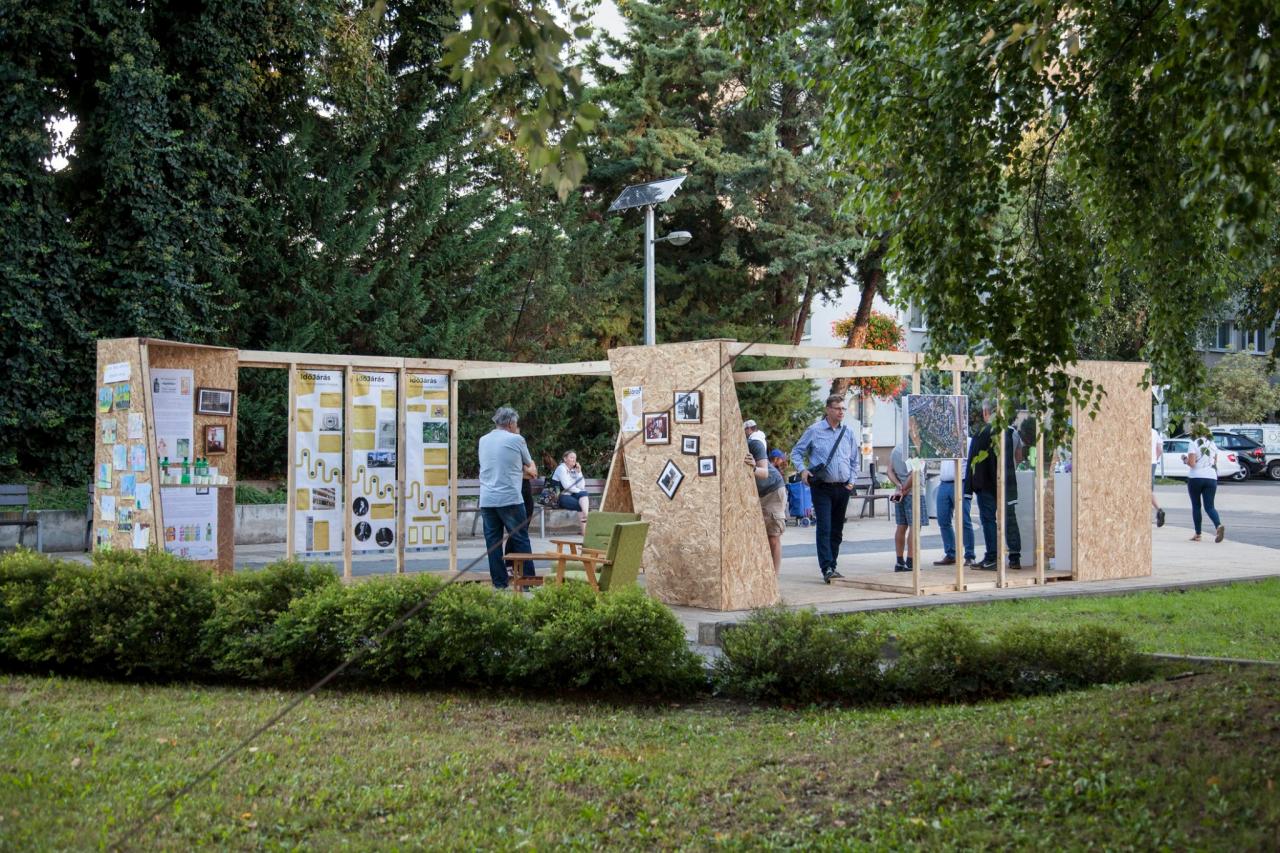
The ‘Come in! – Talking Houses / Shared Stories’ URBACT Transfer Network is centred on the good practice entitled Weekend of Open Houses. It is an easily adaptable community festival in Budapest called locally Budapest100 celebrating the city’s built heritage and common values. Let's see that this knowledge has been put to good use in Őrmező.
In a sunny Sunday afternoon in early September 2019 locals gather in the centre of Őrmező, Budapest, around a temporarily exhibition. All items of the exhibition were initiated by locals, and prepared by some volunteers and mainly by the Contemporary Architecture Centre and the local cultural house coordinating the event. Visitors could read not only about the history of the local mineral water fountains, once well-known in the whole country, search themselves on old school photos, recall old times by sitting in old furniture, get to know the local history and some local urban legends placed on a huge timeline, play retro board games, create panel blocks by paper, and so on, but they actually could share their ideas how to improve the community festival and how to develop the area.
The experience at Őrmező during the ‘IdőJárás Festival’ is essential for the partnership, not only because it was the second pilot festival within the partnership. On one hand, it is great to see that the good practice can be indeed tested in a newly built environment, and addressing the built heritage of the Socialism is a great success, but it is also clear that proper engagement of communities and volunteers is more challenging, simply because it can be difficult to boost these factors as they are deeply rooted in the socio-economic environment and cultural attitudes of the given country.
Besides the network expert, the Lead Partner and the representatives of the Contemporary Architecture Centre, participants from Pori, Plasencia and Varaždin also attended the meeting as peers and all of them collected their observations via taking photos and creating a Mood Record and a Learning Loop based on them (the Mood Records are available by clicking on the city names above). The below case study has been prepared based on these observations.
See the full case sudy in the library.
Ferenc Szigeti-Böröcz

